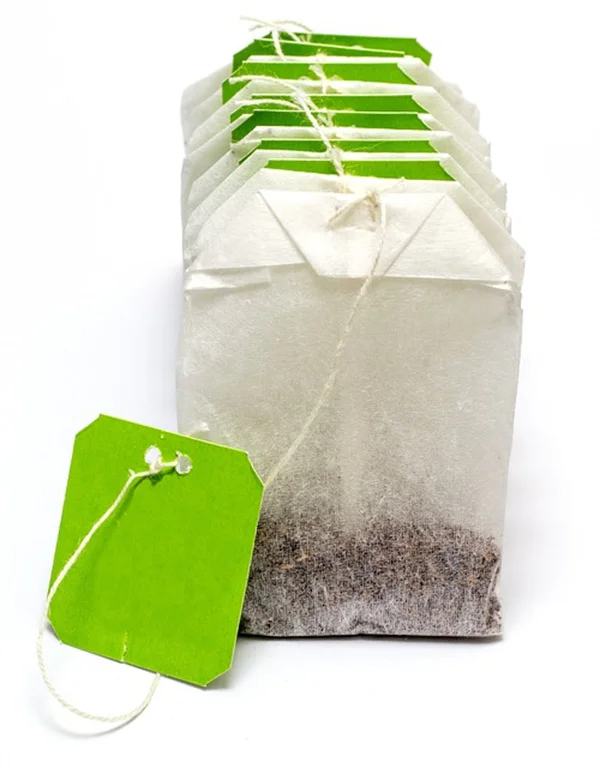Advertisement
Can combining time-restricted eating and high-intensity exercise really boost fat loss? The answer is absolutely yes! A groundbreaking study shows this powerful duo helps you shed pounds and improves heart health markers like cholesterol and blood sugar levels. Here's why it works: when you limit eating to an 8-hour window, you naturally consume fewer calories, while intense workouts build lean muscle that keeps burning calories around the clock. We've seen participants in studies achieve noticeable body composition changes in just 12 weeks - and you can too! The best part? You don't need to count every calorie or live at the gym. Stick with us as we break down exactly how to make this winning combination work for your lifestyle.
E.g. :New Breast Cancer Screening Guidelines: Start at 40 Now
- 1、The Power Duo: Time-Restricted Eating Meets High-Intensity Workouts
- 2、Why This Dynamic Duo Works So Well
- 3、Making It Work in Real Life
- 4、Who Should Think Twice?
- 5、Your Action Plan
- 6、Beyond Weight Loss: The Bigger Picture
- 7、The Hidden Perks You Might Not Know About
- 8、Common Myths Busted
- 9、Real People, Real Results
- 10、Pro Hacks for Busy Lives
- 11、When Results Don't Come Fast Enough
- 12、The Social Side of This Lifestyle
- 13、FAQs
The Power Duo: Time-Restricted Eating Meets High-Intensity Workouts
Why This Combo is Making Headlines
Imagine your body as a high-performance sports car - time-restricted eating acts like premium fuel, while high-intensity exercise serves as the turbo boost. A recent study in PLOS ONE Journal shows this powerful combination helps people lose weight while improving heart health markers like cholesterol and blood sugar levels.
Here's the kicker: participants who did both saw better results than those who only dieted or only exercised. We're talking noticeable body changes and improved health numbers - and who doesn't want that?
Breaking Down the Study
The Game Plan
Researchers divided 64 women with obesity into three teams:
| Group | Strategy | Schedule |
|---|---|---|
| Team Diet | Time-restricted eating only | Ate between 8am-4pm |
| Team Exercise | High-intensity workouts only | 3 sessions/week |
| Dream Team | Both strategies combined | Both schedules |
After 12 weeks, all groups improved, but the combo group stole the show. Their bodies transformed more dramatically, and their health numbers looked better across the board.
Why This Dynamic Duo Works So Well
 Photos provided by pixabay
Photos provided by pixabay
The Science Behind the Magic
Ever wonder why pairing these strategies works better than doing either alone? Here's the scoop:
Time-restricted eating naturally helps you eat fewer calories without counting every bite. Most people automatically cut about 300-500 calories daily when they shorten their eating window. Meanwhile, high-intensity exercise builds lean muscle that keeps burning calories even when you're binge-watching your favorite show.
Double Benefits for Your Health
This isn't just about looking better in your jeans. The combo fights serious health risks like:
- Insulin resistance (that sugar crash feeling)
- High blood pressure
- Dangerous cholesterol levels
Registered dietitian Emma Shafqat explains it like this: "It's like giving your body a complete tune-up - better fuel management plus a more powerful engine."
Making It Work in Real Life
Time-Restricted Eating: Pro Tips
Think you can't go without late-night snacks? Try these expert-approved strategies:
Start your day with a breakfast that keeps you full - think Greek yogurt with berries and nuts or oatmeal loaded with seeds. Protein and fiber are your best friends when eating in shorter windows.
Plan your biggest meal before 4pm with plenty of veggies, lean protein, and whole grains. This prevents that 10pm fridge raid we've all experienced!
 Photos provided by pixabay
Photos provided by pixabay
The Science Behind the Magic
Scared of "high-intensity"? Don't be! Celebrity trainer Michael Baah suggests starting simple:
Try 30 seconds of jumping jacks followed by bodyweight squats - that's high-intensity! The key is pushing yourself hard for short bursts, then recovering. No gym membership required - you can do this in your living room.
Here's Baah's beginner-friendly routine:
- Jump rope (or pretend to) - 30 seconds
- Rest - 30 seconds
- Bodyweight squats - 30 seconds
- Rest - 30 seconds
- Repeat 5 times
Who Should Think Twice?
When This Combo Might Not Fit
Is this approach right for everyone? Not necessarily. If you:
- Work night shifts
- Have a history of eating disorders
- Are pregnant or breastfeeding
...you might want to explore other options. Remember, the best health plan is the one you can stick with - not the trendiest one on Instagram.
Listen to Your Body
Ever feel hangry by 5pm when trying time-restricted eating? That's your body talking! Registered dietitian Emma Shafqat suggests:
"If you're constantly distracted by hunger, maybe extend your eating window to 10 hours instead of 8. The goal is sustainable health, not suffering."
Your Action Plan
 Photos provided by pixabay
Photos provided by pixabay
The Science Behind the Magic
Ready to try this powerhouse combo? Here's how to begin without overwhelm:
Week 1: Simply notice your current eating window. Most people eat over 12+ hours without realizing it!
Week 2: Gradually move dinner earlier by 30 minutes each day until you hit an 8-10 hour window.
Week 3: Add two 15-minute high-intensity sessions (like the routine above).
Track More Than the Scale
Don't just weigh yourself - notice these non-scale victories too:
- How your clothes fit
- Energy levels throughout the day
- Sleep quality
- Workout performance
Remember what trainer Michael Baah says: "Muscle weighs more than fat, so the scale might not tell the whole story of your transformation."
Beyond Weight Loss: The Bigger Picture
Long-Term Health Benefits
While weight loss grabs headlines, the real win is what's happening inside your body:
Improved insulin sensitivity means steadier energy without crashes. Better blood pressure numbers reduce strain on your heart. Enhanced gut health supports immunity and mood.
Think of it this way: you're not just dieting - you're upgrading your body's operating system for better performance in every area of life.
The Sustainability Factor
Can you see yourself doing this long-term? That's the million-dollar question!
The beauty of this approach? You can adjust it as needed. Have a special dinner planned? Extend your eating window that day. Too sore from workouts? Swap high-intensity for yoga or walking.
As dietitian Emma reminds us: "Health isn't about perfection - it's about finding what works for your unique life."
The Hidden Perks You Might Not Know About
Brain Power Boost
Did you know this combo does wonders for your brain? Studies show time-restricted eating increases BDNF (brain-derived neurotrophic factor) - basically fertilizer for your brain cells!
When I tried this approach, I noticed my afternoon brain fog disappeared. My coworkers started calling me "the idea machine" during our 3pm meetings. The high-intensity workouts? They pump oxygen-rich blood to your brain, making you sharper than a brand-new pencil.
Sleep Like a Baby
Here's something you'll love - this routine can seriously upgrade your sleep. When you stop eating late, your body isn't busy digesting when it should be resting.
My friend Sarah swears by this: "I used to wake up 3-4 times nightly. After two weeks of eating before 7pm and morning HIIT, I slept straight through like I did in college!" Better sleep means better recovery, mood, and willpower - it's the ultimate domino effect.
Common Myths Busted
"I'll Lose Muscle"
This fear stops many people, but science says otherwise. The high-intensity workouts actually preserve and build muscle while the eating window helps shed fat.
Take it from bodybuilder-turned-coach Jake: "I was skeptical too until I tried it. My arms actually got more defined while losing belly fat. The key is getting enough protein during your eating window." He recommends 1g of protein per pound of body weight spread across meals.
"It's Too Extreme"
Think you have to go from midnight snacker to 8-hour window overnight? Nope! The beauty is in the flexibility.
Start with an 12-hour window (8am-8pm), then gradually shrink it. As for workouts, even 10 minutes of real effort counts. Small steps create big changes over time - that's how I went from couch potato to 5am workout enthusiast!
Real People, Real Results
Maria's Transformation
Maria, a 42-year-old teacher, combined 16:8 fasting with 20-minute home workouts. In 3 months she:
- Lost 18 pounds
- Dropped 2 dress sizes
- Cut her blood pressure medication in half
Her secret? "I meal prepped hard-boiled eggs and veggies for quick lunches. For workouts, I followed YouTube videos during my planning period." Proof you don't need fancy equipment or chef skills!
Tom's Energy Revolution
Tom, a 55-year-old accountant, saw shocking changes beyond weight loss:
| Before | After 8 Weeks |
|---|---|
| 3pm energy crashes | Steady energy all day |
| Pre-diabetic | Normal blood sugar |
| Couldn't play with grandkids | Coaches little league |
His advice? "Stop overthinking it. Just eat real food when you're hungry during your window, and move intensely for short bursts. The body knows what to do!"
Pro Hacks for Busy Lives
The 2-Minute Meal Prep
Think meal prep takes hours? Try these lightning-fast ideas:
• Overnight oats: Mix oats, milk, chia seeds, and peanut butter in a jar before bed. Grab and go!
• Protein packs: Keep hard-boiled eggs, cheese cubes, and nuts ready for emergencies.
• Frozen smoothie kits: Pre-portion fruits and spinach in bags - just add liquid and blend.
These saved me when work got crazy. No cooking required, just smart thinking ahead - your future hungry self will thank you!
Workout Anywhere
Stuck in an airport? Hotel room tiny? No problem! Trainer Amanda suggests:
"Do chair dips using a sturdy chair, hallway lunges, and wall push-ups. I've trained clients in hospital waiting rooms!" The key is creativity - your body doesn't care where it moves, just that it moves with effort.
When Results Don't Come Fast Enough
Patience Pays Off
Our instant-gratification brains expect overnight results. But real change takes time - and that's okay!
Photographer Lisa shares: "After two weeks I saw nothing and almost quit. My trainer said 'Trust the process.' By week six? Boom - my jeans fit differently and I had visible arm definition." The scale might not budge at first while your body recompositions - stay the course!
Non-Scale Victories to Celebrate
While waiting for the numbers to change, notice these wins:
- Walking up stairs without getting winded
- Buttoning pants without sucking in
- Choosing veggies because you actually want them
- Waking up before your alarm
These "small" changes prove your habits are working, even if the mirror hasn't caught up yet!
The Social Side of This Lifestyle
Eating Out Without Stress
Think you can't dine with friends on this plan? Wrong! Here's how I handle restaurants:
• Check menus online first
• Suggest brunch instead of dinner
• Order appetizers as my main meal
• Share desserts to stay in my window
Last girls' night, I enjoyed steak frites at 6pm instead of my usual late-night pizza. Still social, just smarter timing - and no food coma before bed!
Finding Your Tribe
Going solo is tough. That's why online communities rock for support and ideas.
Reddit's intermittent fasting group shares hilarious memes about hunger pangs. Facebook groups trade workout modifications for injuries. Even Instagram hashtags (#HIFasting) connect people worldwide. Because let's be real - misery loves company, but so does success!
E.g. :Effect of Time-Restricted Eating on Weight Loss in Adults With Type ...
FAQs
Q: How exactly does time-restricted eating help with weight loss?
A: Time-restricted eating works for weight loss in several smart ways. First, by shortening your daily eating window (typically to 8-10 hours), you naturally tend to eat fewer calories without consciously dieting. Second, it gives your digestive system a longer break each day, which helps regulate hunger hormones like ghrelin. We've seen in studies that most people automatically cut 300-500 calories daily when following this approach. Plus, the fasting period encourages your body to tap into fat stores for energy. But here's the kicker - it's not just about eating less. The structured schedule helps break mindless eating habits like late-night snacking that can sabotage weight loss efforts.
Q: What counts as "high-intensity" exercise for beginners?
A: Don't let the term "high-intensity" scare you off! For beginners, we recommend starting with simple exercises that get your heart pumping in short bursts. Think 30 seconds of jumping jacks, brisk walking uphill, or bodyweight squats done with good form. The key is pushing yourself to about 7-8 on a scale of 1-10 during the active periods, then recovering. You don't need fancy equipment - many effective HIIT workouts use just your body weight. We suggest starting with 15-20 minute sessions, alternating 30 seconds of work with 30 seconds of rest. As you get fitter, you can increase intensity and duration gradually.
Q: Is the 8-hour eating window the only option that works?
A: Not at all! While the study used an 8-hour window (8am-4pm), we've found that different schedules can work depending on your lifestyle. The sweet spot for most people seems to be between 8-10 hours. If you're not a morning person, maybe try 10am-6pm or 11am-7pm. The important thing is consistency and finding a window that you can maintain long-term without feeling deprived. We recommend experimenting to see what fits your schedule and hunger patterns best. Remember, the goal is sustainable change, not rigid adherence to someone else's timetable.
Q: Can I still build muscle while doing time-restricted eating?
A: Absolutely! This is where the combination really shines. While time-restricted eating helps reduce fat, the high-intensity exercise stimulates muscle growth. We suggest timing your workouts toward the end of your fasting period or early in your eating window. Then consume adequate protein (about 0.7-1 gram per pound of body weight) during your eating window to support muscle repair and growth. Many athletes actually find they gain lean muscle while losing fat on this regimen. The key is making sure you're getting enough calories and nutrients during your eating window to support both fat loss and muscle maintenance.
Q: What should I eat during my eating window for best results?
A: Focus on nutrient-dense whole foods that keep you satisfied. We recommend starting your eating window with a protein-rich meal like eggs with avocado or Greek yogurt with nuts and berries. Include plenty of vegetables, lean proteins, healthy fats, and fiber at each meal to stay full. A sample plate might look like: 1/2 plate non-starchy veggies, 1/4 plate quality protein (chicken, fish, tofu), and 1/4 plate complex carbs (quinoa, sweet potato). Stay hydrated with water and herbal teas during fasting periods. The more you nourish your body with good foods during your eating window, the easier the fasting periods become.

